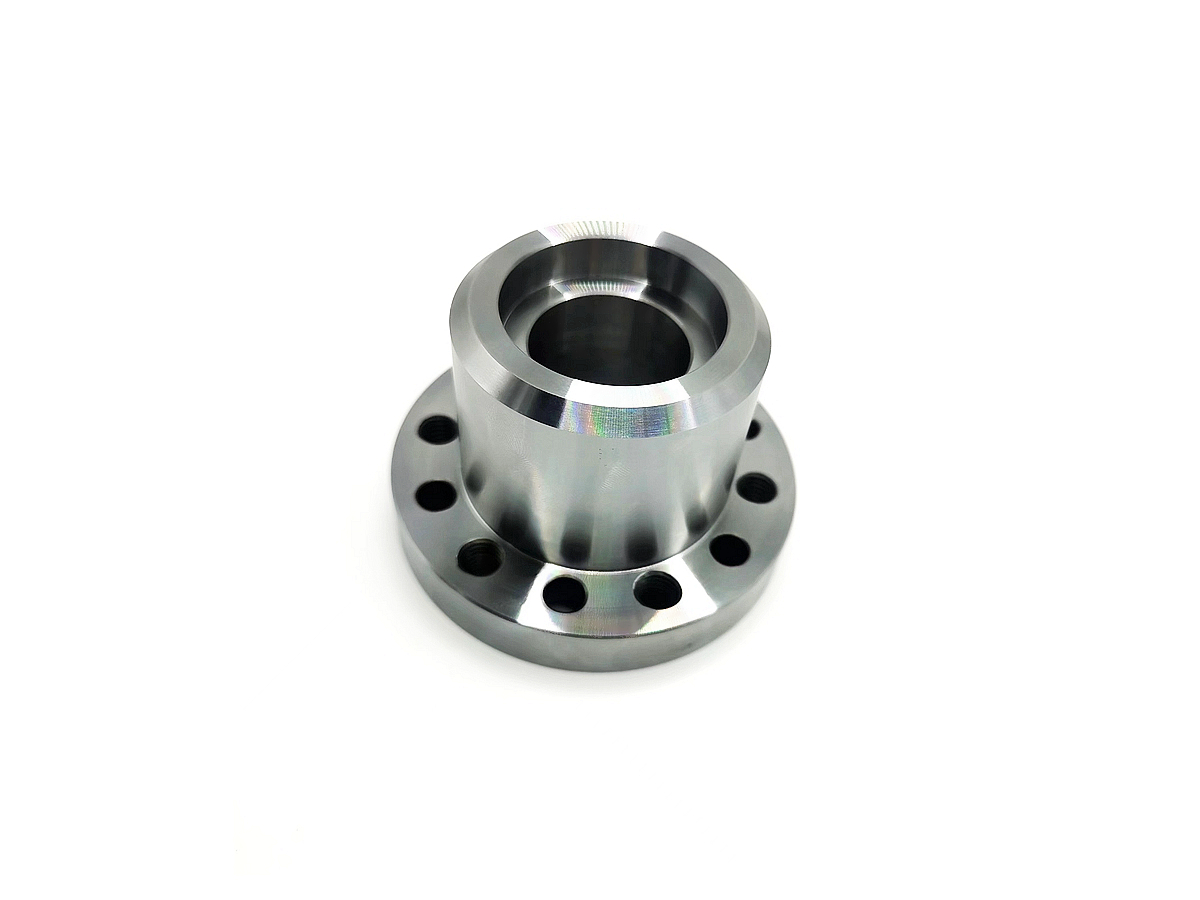Precision CNC Rapid Prototyping of Titanium Parts for Medical and Industrial Applications
Introduction
Precision CNC rapid prototyping of titanium has become essential for manufacturing high-quality components tailored specifically for medical and industrial applications. Industries such as medical devices, aerospace, and industrial equipment increasingly rely on CNC rapid prototyping to efficiently produce precise titanium parts (±0.005 mm accuracy) using alloys like Ti-6Al-4V (Grade 5), Ti-6Al-4V ELI (Grade 23), and Ti-5Al-2.5Sn.
CNC rapid prototyping significantly shortens the development cycle, enabling accurate validation and refinement of titanium components before entering mass production.
Titanium Alloy Material Properties
Material Performance Comparison Table
Titanium Alloy | Tensile Strength (MPa) | Yield Strength (MPa) | Corrosion Resistance | Density (g/cm³) | Applications | Advantages |
|---|---|---|---|---|---|---|
950-1150 | 880-1000 | Excellent (ASTM F1472) | 4.43 | Surgical implants, aerospace parts | High strength-to-weight ratio, biocompatibility | |
900-1100 | 830-950 | Superior (ASTM F136) | 4.42 | Medical implants, orthopedic devices | Superior biocompatibility, enhanced ductility | |
830-900 | 780-850 | Excellent (ASTM B265) | 4.48 | Industrial components, structural parts | Good weldability, thermal stability | |
340-480 | 275-410 | Excellent (ASTM B348) | 4.51 | Chemical processing equipment | Excellent formability, corrosion resistance |
Material Selection Strategy
Selecting suitable titanium alloys involves considering application requirements, biocompatibility, and mechanical properties:
Ti-6Al-4V (Grade 5): Ideal for surgical instruments and aerospace applications requiring a high strength-to-weight ratio (up to 1150 MPa tensile strength), excellent corrosion resistance (ASTM F1472), and biocompatibility.
Ti-6Al-4V ELI (Grade 23): Preferred for medical implants due to superior biocompatibility, lower oxygen content, and excellent strength (up to 1100 MPa) combined with enhanced ductility.
Ti-5Al-2.5Sn (Grade 6): Recommended for industrial components that demand high strength (up to 900 MPa) and good weldability, commonly used in structural parts and heat-resistant applications.
Ti-Grade 2: Suitable for applications needing exceptional corrosion resistance, moderate strength, and excellent formability, commonly applied in chemical processing equipment and marine components.
CNC Prototyping Processes for Titanium Components
CNC Process Comparison Table
CNC Machining Process | Accuracy (mm) | Surface Finish (Ra µm) | Typical Uses | Advantages |
|---|---|---|---|---|
±0.005 | 0.4-1.6 | Complex geometries, implant components | High precision, intricate shapes | |
±0.005 | 0.4-1.6 | Shafts, cylindrical implants | High accuracy, excellent surface finishes | |
±0.002 | 0.2-0.6 | Precision surfaces, tight tolerances | Ultra-high precision, excellent surface quality | |
±0.003 | 0.2-1.0 | Complex medical implants, aerospace components | Superior accuracy, minimized setup times |
CNC Process Selection Strategy
Selecting the optimal CNC process for titanium rapid prototyping involves evaluating part complexity, dimensional accuracy, and surface quality requirements:
CNC Milling: Preferred for complex, irregular-shaped prototypes requiring high accuracy (±0.005 mm), commonly applied in medical implants and aerospace components.
CNC Turning: Ideal for precise cylindrical components, such as orthopedic pins, shafts, and mechanical parts, providing tight dimensional tolerances (±0.005 mm).
CNC Grinding: Essential for components demanding exceptionally tight tolerances (±0.002 mm) and ultra-fine surface finishes, ideal for precision medical components.
Multi-Axis Machining: Best suited for intricate designs requiring multiple angled features, providing superior dimensional control and minimizing setup times for aerospace and medical components.
Surface Treatments for Titanium Components
Surface Treatment Comparison
Treatment Method | Surface Roughness (Ra µm) | Corrosion Resistance | Max Temp (°C) | Applications | Key Features |
|---|---|---|---|---|---|
≤0.8 | Superior (AMS 2488) | 350 | Medical implants, aerospace parts | Enhanced biocompatibility, corrosion protection | |
≤1.0 | Excellent (ASTM F86) | 400 | Surgical instruments | Improved corrosion resistance, clean finish | |
≤0.3 | Superior (ASTM B912) | 350 | Orthopedic implants, precision parts | Ultra-smooth surface, enhanced biocompatibility | |
≤0.5 | Superior (ASTM B117) | 600 | Wear-resistant components | Increased hardness, reduced wear |
Surface Treatment Selection Strategy
Proper surface treatments enhance the performance, biocompatibility, and durability of titanium components:
Anodizing: Essential for medical implants, providing superior biocompatibility and corrosion protection (AMS 2488).
Passivation: Recommended for surgical instruments, significantly enhancing corrosion resistance (ASTM F86) and ensuring contaminant-free surfaces.
Electropolishing: Preferred for orthopedic implants, delivering ultra-smooth surfaces (≤0.3 µm) to maximize biocompatibility and minimize bacterial adhesion.
PVD Coating: Optimal for industrial and medical parts experiencing high wear, substantially improving surface hardness and wear resistance at temperatures up to 600°C.
Quality Assurance Procedures
CMM Dimensional Inspection: High accuracy ±0.002 mm (ISO 10360-2).
Material Certification: Verification of alloys per ASTM standards (ASTM B348, ASTM F136).
Surface Finish Testing: Conforming to ISO 4287.
Mechanical Testing: Tensile and fatigue testing per ASTM E8, ASTM F1717.
Corrosion Resistance Testing: ASTM F2129 and ASTM B117.
Ultrasonic Inspection: Detect internal defects per ASTM E2375.
ISO 13485 Medical Quality Compliance: Ensuring reliability and traceability for medical devices.
Key Industry Applications
Orthopedic implants
Surgical tools
Aerospace structural components
Industrial equipment parts
Related FAQs:
Why choose titanium for medical prototypes?
Which CNC method provides the highest precision for titanium parts?
What surface treatments enhance titanium part performance?
What quality standards are critical for medical titanium parts?
Which industries benefit most from CNC titanium prototyping?

